Liberia is a West African nation bordered by Sierra Leone, Guinea, and Ivory Coast, with the Atlantic Ocean to its south. It covers approximately 43,000 square miles and has a population of about 5.5 million. English is the official language, though numerous indigenous languages are spoken. Monrovia is its capital and largest city.
1904: Liberia's Debt
In 1904 Liberia owed $800,000 in debt.
1904: Indigenous People Granted Citizenship
In 1904, indigenous people in Liberia were granted birthright citizenship in their own land.
1917: Liberia Declares War on Germany
In 1917, Liberia declared war on Germany, following the U.S., in hopes of receiving financial aid from the Allied Powers during World War I.
1919: Versailles Peace Conference
In 1919, Liberia participated in the Versailles Peace Conference, which ended World War I and established the League of Nations.
1921: Depression
As a result of the depression of 1921, rubber prices fell.
1922: Depression
As a result of the depression of 1922, rubber prices fell.
1926: Firestone Plantation Operation
Since 1926 Firestone has operated the world's largest rubber plantation in Harbel, Margibi County.
1927: Rigged Elections
In 1927, Liberia's elections were heavily rigged, showcasing the True Whig Party's power.
1929: US Depression
The onset of the 1929 depression in the United States caused an extreme drop in the price of rubber, significantly lowering rubber plantations' expected revenue.
December 1932: Liberia Suspends Repayment to Firestone
In December 1932, Liberia unilaterally suspended repayment obligations to Firestone due to the extreme drop in rubber prices caused by the 1929 depression in the United States.
1935: Resolution of Dispute with Firestone
In 1935, the dispute between Liberia and Firestone was settled, with Firestone advancing $650,000 to Liberia and gaining exemptions from export and personal income taxes.
1936: Italian Occupation of Ethiopia
In 1936, Ethiopia faced Italian occupation, even though it was never colonized, distinguishing it from Liberia, which maintained continuous independence.
1943: Start of using USD
Liberia used the United States dollar as its currency from 1943 until 1982.
1944: "Open Door" Policy Announced
In 1944, President Tubman announced his "Open Door" policy, encouraging foreign investment in Liberia.
1960: Iron ore mining
Between 1960 and 1980, iron ore mining was the mainstay of the Liberian economy, contributing to more than 60 percent of export earnings.
1962: Liberia's population in 1962
In 1962, the population of Liberia was 1,016,443.
1974: Liberia's population in 1974
In 1974, Liberia's population increased to 1,503,368.
November 23, 1976: Bomi Hills workers strike
On November 23, 1976, workers at the depleted iron ore mines at Bomi Hills went on strike demanding that, prior to the mine's closing, they should be paid two months wage for each year they worked with the company. News reporters on the scene described random arrests and undue violence towards workers on strike.
1979: Peak in economic growth
Following a peak in growth in 1979, the Liberian economy began a steady decline due to economic mismanagement after the 1980 coup.
April 12, 1980: Military Coup Led by Samuel Doe
On April 12, 1980, Master Sergeant Samuel Doe led a military coup, overthrowing and killing President William R. Tolbert Jr. and executing his cabinet members.
1980: Iron ore mining
Between 1960 and 1980, iron ore mining was the mainstay of the Liberian economy, contributing to more than 60 percent of export earnings.
1980: Economic decline due to mismanagement
Following a peak in growth in 1979, the Liberian economy began a steady decline due to economic mismanagement after the 1980 coup.
1980: Military Coup
In 1980, political tensions in Liberia led to a military coup, ending Americo-Liberian rule and bringing Samuel Doe, Liberia's first indigenous leader, to power.
1980: Peak GDP per Capita
Liberia's GDP per capita peaked in 1980 at US$496.
1980: End of True Whig Party Domination
The True Whig Party dominated the Liberian government from 1877 until 1980.
1982: End of using only USD
Liberia used the United States dollar as its currency from 1943 until 1982 and continues to use the U.S. dollar alongside the Liberian dollar.
1983: Liberian national basketball team reached the AfroBasket
In 1983, The Liberian national basketball team has reached the AfroBasket.
1984: Liberia's Population Listed in Census
In 1984, the last census taken prior to 2008, listed Liberia's population as 2,101,628.
November 12, 1985: Failed Coup Attempt
On November 12, 1985, a failed coup was launched by Thomas Quiwonkpa, leading to intensified government repression and Doe's troops executing members of the Gio and Mano ethnic groups.
1985: Last Election of Chiefs
The Constitution calls for the election of various chiefs at the county and local level, but these elections have not taken place since 1985 due to war and financial constraints.
December 1989: Insurrection Launched by Charles Taylor
In December 1989, The National Patriotic Front of Liberia, a rebel group led by Charles Taylor, launched an insurrection against Doe's government with the backing of neighboring countries, triggering the First Liberian Civil War.
1989: First Liberian Civil War Begins
In 1989, The First Liberian Civil War started and ran until 1997.
1989: Peak Electricity Capacity Before the Wars
In 1989, before the civil wars, Liberia's total electricity capacity peaked at 191 MW.
1989: Start of First Liberian Civil War
In 1989, the First Liberian Civil War began, severely damaging Liberia's communication infrastructure.
1989: Start of civil war
This decline was accelerated by the outbreak of civil war in 1989.
September 1990: Doe Captured and Executed
In September 1990, Samuel Doe was captured and executed by rebel forces as his government controlled only a small area outside the capital.
1990: Assassination of Samuel Doe
In 1990, Samuel Doe was assassinated during the First Liberian Civil War, which had started the previous year.
1995: Estimated GDP reduction
GDP was reduced by an estimated 90% between 1989 and 1995, one of the fastest declines in modern history.
1995: Peace Deal Reached
In 1995, a peace deal was reached between warring parties in Liberia, leading to Taylor's election as president in 1997.
1996: Displacement of Liberians
By 1996, approximately 700,000 Liberians had been displaced into refugee camps in neighboring countries due to the civil war.
1996: End of First Liberian Civil War
In 1996, the First Liberian Civil War ended, leaving much of Liberia's communications infrastructure destroyed or plundered.
1996: Liberia National Football Team Reached Africa Cup of Nations Finals
In 1996, the Liberia national football team reached the Africa Cup of Nations finals.
1997: Charles Taylor Elected President
In 1997, Charles Taylor was elected as president following a peace deal between warring parties, despite the previous years of civil war.
1997: Timber Exports Amount
In 1997, Liberian timber exports amounted to US$5 million.
1998: Second Liberian Civil War
In 1998, the Second Liberian Civil War broke out against Charles Taylor's dictatorship.
1999: Diamond exports
In 1999, Liberia exported over US$300 million in diamonds.
1999: Second Liberian Civil War Begins
In 1999, the Second Liberian Civil War began as the Liberians United for Reconciliation and Democracy launched an armed insurrection against Taylor.
1999: Start of Second Liberian Civil War
In 1999, the Second Liberian Civil War began, further devastating Liberia's communication infrastructure.
2001: Creation of Gbarpolu County
In 2001, Gbarpolu was created as the newest county in Liberia.
2001: UN ban on diamond exports
This led to a United Nations ban on Liberian diamond exports in 2001, which was lifted in 2007 following Liberia's accession to the Kimberley Process Certification Scheme.
2002: Timber Exports Amount
In 2002, Liberian timber exports had risen to over US$100 million.
2002: Liberia National Football Team Reached Africa Cup of Nations Finals
In 2002, the Liberia national football team reached the Africa Cup of Nations finals for the second time.
March 2003: Second Rebel Group Attacks
In March 2003, a second rebel group, Movement for Democracy in Liberia, began launching attacks against Taylor from the southeast, escalating the conflict.
July 2003: Rebel Assault on Monrovia
By July 2003, rebels had launched an assault on Monrovia, increasing pressure on Taylor's government amidst peace talks and an indictment for war crimes.
August 2003: Taylor's Resignation
In August 2003, under international and domestic pressure, Taylor resigned and went into exile, leading to a peace deal later that month.
September 2003: UN Mission Arrives
In September 2003, the United Nations Mission in Liberia began arriving to provide security and monitor the peace accord after years of civil war.
2003: Healthcare facilities destroyed by civil war
By the time the civil war ended in 2003, approximately 95% of Liberia's healthcare facilities had been destroyed.
2003: Decrease in inflation begins
Following a decrease in inflation beginning in 2003, inflation spiked in 2008 as a result of worldwide food and energy crises.
2003: UN Sanctions on Timber Exports
In 2003, additional UN sanctions were placed on Liberian timber exports.
2003: Gbowee Women's Peace Movement
In 2003, peace activist Leymah Gbowee led a women's peace movement that brought to an end to the Second Liberian Civil War.
2003: End of Second Liberian Civil War
In 2003, the Second Liberian Civil War ended with Charles Taylor's resignation. A peace agreement paved the way for democratic elections.
2003: Increase in illegal logging
Since 2003, which marks the end of the Second Civil War, illegal logging has increased in Liberia.
2003: End of war and GDP growth
Upon the end of the war in 2003, GDP growth began to accelerate, reaching 9.4% in 2007.
2004: Auctioning of offshore oil exploration licenses began
In 2004, Liberia divided its offshore waters into 17 blocks and began auctioning off exploration licenses for the blocks.
2004: Bushmeat Consumption
In 2004, a public opinion survey showed that bushmeat was a preferred source of protein in Liberia, second only to fish.
2005: Democratic Elections
In 2005, Liberia held democratic elections following a peace agreement.
2005: Rebuilding of the Armed Forces
Starting in 2005, the old military was disbanded and entirely rebuilt with assistance and funding from the United States.
2005: First Election Without Presidential Party Majority
The 2005 elections marked the first time that the president's party did not gain a majority of seats in the Legislature.
2005: Ellen Johnson Sirleaf Elected President
The 2005 elections were internationally regarded as the freest and fairest in Liberian history. Ellen Johnson Sirleaf was elected as the first female president in Africa.
2006: Highest population growth rate in the world
As of 2006, Liberia had the highest population growth rate in the world at 4.50% per annum.
2006: Truth and Reconciliation Commission Established
In 2006, the Liberian government established a Truth and Reconciliation Commission to address the causes and crimes of the civil war.
2006: Foreign direct investment since 2006
Liberia has the highest ratio of foreign direct investment to GDP in the world, with US$16 billion (~$23.9 billion in 2024) in investment since 2006. Following Sirleaf's inauguration in 2006, Liberia signed several multi-billion-dollar concession agreements in the iron ore and palm oil industries.
2006: External debt
Liberia's external debt was estimated in 2006 at approximately $4.5 billion, 800% of GDP.
2006: Government Opened Community Colleges
Since 2006, the Liberian government has also opened community colleges in Buchanan, Sanniquellie, and Voinjama.
2006: Timber Sanctions Lifted
The UN sanctions placed on Liberian timber exports in 2003 were lifted in 2006.
2006: Sirleaf Declares Corruption as Public Enemy
When President Sirleaf took office in 2006, she announced that corruption was "the major public enemy."
October 2007: Liberian National Police Statistics
As of October 2007, the Liberian National Police had 844 officers in 33 stations in Montserrado County, which contains Monrovia.
2007: Debt Relief Begins
As a result of bilateral, multilateral and commercial debt relief from 2007 to 2010, the country's external debt fell to $222.9 million by 2011.
2007: Malnutrition rate among children under five
In 2007, 20.4% of children under the age of five in Liberia were malnourished.
2007: Further auctions of offshore oil licenses
In 2007, Liberia held further auctions for offshore oil exploration licenses.
2007: Corruption Score
In 2007, Liberia's corruption score was 2.1, ranking 150th out of 180 countries.
2007: Liberian national basketball team reached the AfroBasket
In 2007, The Liberian national basketball team has reached the AfroBasket.
2007: HIV infection rates
In 2007, the HIV infection rates in Liberia stood at 2% of the population aged 15–49.
2007: UN ban lifted
The United Nations ban on Liberian diamond exports in 2001, was lifted in 2007 following Liberia's accession to the Kimberley Process Certification Scheme.
2007: GDP growth reached 9.4%
Upon the end of the war in 2003, GDP growth began to accelerate, reaching 9.4% in 2007.
2008: Religious Demographics According to 2008 Census
According to the 2008 National Census, 85.6% of Liberia's population practiced Christianity, while 12.2% were Muslim.
2008: Montserrado County Population
According to the 2008 census, Montserrado is the most populous county with 1,144,806 residents.
2008: Monrovia's population was more than four times greater than all county capitals combined.
As revealed in the 2008 census, Monrovia's population was more than four times greater than all the county capitals combined.
2008: Peak Account Deficit
Due in large part to foreign aid and investment inflow following the end of the war, Liberia maintains a large account deficit, which peaked at nearly 60% in 2008.
2008: Adherence to Traditional Indigenous Religions
In 2008, 0.5% of Liberia's population identified adherence to traditional indigenous religions, while 1.5% claimed no religion. A small number of people were Baháʼí, Hindu, Sikh, or Buddhist.
2008: Number of doctors and nurses per 100,000 people
In 2008, Liberia had only one doctor and 27 nurses per 100,000 people.
2008: Muslims in Liberia
In 2008, Muslims comprised 12.2% of the Liberian population, largely represented by the Mandingo and Vai ethnic groups and divided between Sunnis, Shias, Ahmadiyyas, Sufis, and non-denominational Muslims.
2008: Incidence of tuberculosis
In 2008, the incidence of tuberculosis in Liberia was 420 per 100,000 people.
2008: National Census
In 2008, the national census was conducted in Liberia.
2009: Additional auctions of offshore oil licenses
In 2009, Liberia conducted additional auctions for offshore oil exploration licenses.
2009: Concessions granted to Sime Darby
In 2009, Liberia granted one of its largest concessions to Sime Darby, despite local and international concern over the environmental impacts this could cause.
2009: Establishment of Tubman University
In 2009, Tubman University in Harper, Maryland County, was established as the second public university in Liberia.
2009: Government expenditure on health care per capita
In 2009, government expenditure on health care per capita in Liberia was US$22, accounting for 10.6% of total GDP.
2009: Inflation declined
Inflation spiked in 2008 as a result of worldwide food and energy crises, reaching 17.5% before declining to 7.4% in 2009.
2010: Debt Relief Ends
As a result of bilateral, multilateral and commercial debt relief from 2007 to 2010, the country's external debt fell to $222.9 million by 2011.
2010: Liberia's Corruption Ranking and Bribe Payments
As of 2010, Liberia was one of the most politically corrupt nations. According to the organization's 2010 Global Corruption Barometer, 89% of Liberians reported having to pay a bribe when dealing with public-facing government functionaries.
2010: Growth due to agriculture
In 2010, a strengthening agricultural sector led by rubber and timber exports increased growth to 5.1%.
2010: Percentage of Liberians below age 15
In 2010, approximately 43.5% of Liberians were below the age of 15.
2010: Literacy Rate of Liberia Estimated
In 2010, the literacy rate of Liberia was estimated at 60.8% (64.8% for males and 56.8% for females).
2010: Maternal mortality rate
In 2010, the maternal mortality rate in Liberia stood at 990 per 100,000 births.
2010: Operation Onward Liberty
In 2010, the military assistance program became known as Operation Onward Liberty, providing training to make the AFL apolitical and professional.
2010: Observer Status with WTO
Liberia gained observer status with the World Trade Organization in 2010 and became an official member in 2016.
2010: Net agricultural trade deficit
Net agricultural trade was -$73.12 million in 2010.
October 2011: Leymah Gbowee Receives Nobel Peace Prize
In October 2011, peace activist Leymah Gbowee received the Nobel Peace Prize for her work leading a women's peace movement that brought an end to the Second Liberian Civil War in 2003.
November 2011: President Sirleaf Re-elected
In November 2011, President Ellen Johnson Sirleaf was re-elected for a second six-year term.
2011: External debt after relief
As a result of bilateral, multilateral and commercial debt relief from 2007 to 2010, the country's external debt fell to $222.9 million by 2011.
2011: Demarcation of ultra-deep offshore blocks
In 2011, Liberia demarcated 13 ultra-deep offshore blocks and planned for auction.
2011: Nominal GDP and GDP per Capita
In 2011, Liberia's nominal GDP was US$1.154 billion, while nominal GDP per capita stood at US$297, the third-lowest in the world.
2011: Expected economic growth
In 2011, growth increased and an expected 7.3% economic growth making the economy one of the 20 fastest-growing in the world.
July 20, 2012: Senate Vote on Same-Sex Marriages
On July 20, 2012, the Liberian senate voted unanimously to enact legislation to prohibit and criminalize same-sex marriages.
2012: Granting and canceling of logging licenses
In 2012, President Sirleaf granted licenses to companies to cut down 58% of Liberia's primary rainforest, but many permits were canceled after international protests.
2013: Liberia began importing power
In 2013, Liberia began importing power from neighboring Ivory Coast and Guinea through the West African Power Pool.
2013: Mineral sector accounted for 11% of GDP
In 2013, Liberia's mineral sector, consisting primarily of gold, diamonds, and iron ore, accounted for 11% of the country's GDP.
2013: Electricity capacity at 20 MW
In 2013, Liberia's total electricity capacity was 20 MW, a significant decrease from 191 MW before the wars.
2013: Deployment of peacekeepers
Since 2013, Liberia has deployed peacekeepers to other countries as part of UN or ECOWAS missions.
September 2014: Liberia and Norway strike logging deal
In September 2014, Liberia and Norway reached an agreement where Liberia stopped all logging activities in exchange for $150 million in development aid.
November 17, 2014: Confirmed Ebola Deaths
As of November 17, 2014, there were 2,812 confirmed deaths from the ongoing Ebola outbreak in Liberia.
2014: US Ambassador on Corruption Impact
In 2014, the US ambassador to Liberia stated that corruption there was harming people by causing "unnecessary costs to products and services that are already difficult for many Liberians to afford".
2015: Firestone Employees
As of 2015, Firestone had more than 8,000 mostly Liberian employees, making it the country's largest private employer.
2016: Official Member of WTO
Liberia gained observer status with the World Trade Organization in 2010 and became an official member in 2016.
2017: Liberia's National Census
As of the 2017 national census, Liberia had a population of 4,694,608 people, with 1,118,241 residing in Montserrado County.
2017: Liberian General Election
Following the 2017 Liberian general election, former professional football striker George Weah was elected as president.
2017: Projected increase in the mineral sector
In 2017, the World Bank projected a further increase in Liberia's mineral sector.
2017: Maternal mortality rate
In 2017, the maternal mortality rate in Liberia was 1,072 per 100,000 births.
January 22, 2018: George Weah Sworn in as President
On January 22, 2018, former professional football striker George Weah was sworn in as president of Liberia, marking the country's first fully democratic transition in 74 years.
October 2018: Abolishment of Tuition Fees
In October 2018, newly elected president George Weah abolished tuition fees for undergraduate students in public universities in Liberia due to student protests.
2018: Liberia Committed to Adopting the Metric System
In 2018, the Liberian Commerce and Industry Minister announced that the Liberian government is committed to adopting the metric system.
2018: Mount Coffee Hydropower Project Completed
In 2018, the repair and expansion of the Mount Coffee Hydropower Project, with a maximum capacity of 80 MW, was completed.
2020: Life expectancy in Liberia
In 2020, life expectancy in Liberia was estimated to be 64.4 years.
2022: Military budget
In 2022 the country had a military budget of US$18.7 million.
December 2023: End of UN mission in Mali
About 800 of the AFL's 2,000 personnel have been deployed to Mali in several rotations before the UN mission there ended in December 2023.
2023: Liberia's Democracy Ranking
According to 2023 V-Dem Democracy indices Liberia is ranked 65th electoral democracy worldwide and 9th electoral democracy in Africa.
2023: Joseph Boakai Defeats Weah
In the 2023 presidential election, opposition leader Joseph Boakai defeated Weah.
January 22, 2024: Joseph Boakai Sworn in as President
On January 22, 2024, Joseph Boakai was sworn in as Liberia's new president.
March 1, 2024: Kinjor Protest
Some of the protests, such as the March 1, 2024, protest at Kinjor, have resulted in injuries and even deaths of Liberian miners.
September 2024: IMF Financial Arrangement Approval
In September 2024 the International Monetary Fund (IMF) approved a financial arrangement of approximately $210 million for Liberia, including an immediate disbursement of around $8 million, to support Liberia's economic recovery and address fiscal challenges.
2024: Government expenditure on health care per capita
In 2024, government expenditure on health care per capita in Liberia was ~$31.00.
2024: Equivalent of 2006 FDI in 2024
Liberia has the highest ratio of foreign direct investment to GDP in the world, with US$16 billion in investment since 2006, which is equivalent to ~$23.9 billion in 2024.
2024: Equivalent of 1980 GDP per Capita in 2024
The GDP per capita peak in 1980 is equivalent to ~$1,893 in 2024.
2024: Equivalent of 1999 diamond exports in 2024
The US$300 million in diamond exports in 1999 is equivalent to ~$530 million in 2024.
Mentioned in this timeline

Basketball is a team sport played on a rectangular court...
The United States of America is a federal republic located...
Germany officially the Federal Republic of Germany is a Western...
Africa is the second-largest and second-most populous continent comprising of...

Inflation in economics signifies an increase in the average price...
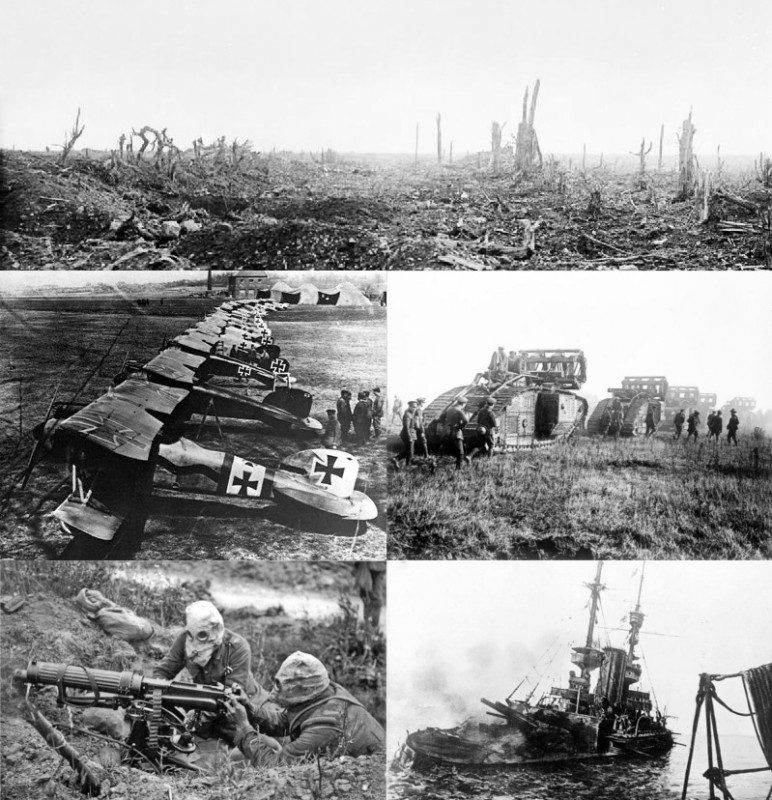
World War I a global conflict between the Allies and...
Trending

59 minutes ago Jane Fonda Praises Ex-Husband Ted Turner’s Support; Celebrates 30 Years Reducing Teen Pregnancy.

59 minutes ago Texas Faces Record Whooping Cough Surge: Health Alert Issued Amid Rising Cases
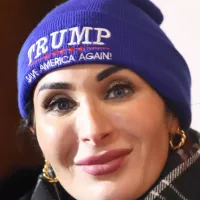
2 hours ago Trump Withdraws Nominee for Top IRS Lawyer Amidst Loomer Controversy.

2 hours ago Yungblud teams with Aerosmith for Rolling Stone UK cover; concert and rock relationship.
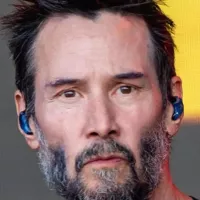
3 hours ago Keanu Reeves and Alex Winter Reunite for 'Waiting for Godot' Broadway Revival.
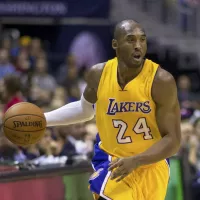
3 hours ago Kobe Bryant's dominance, UCLA runs, and NBA 2K texts revealed in new stories.
Popular
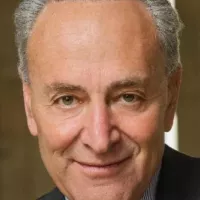
Chuck Schumer is the senior United States Senator from New...
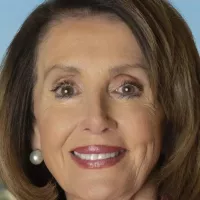
Nancy Pelosi is a prominent American politician notably serving as...

Bernie Sanders is a prominent American politician currently serving as...
Nicholas J Fuentes is a far-right political commentator and activist...

Candace Owens is an American political commentator and author known...

XXXTentacion born Jahseh Dwayne Ricardo Onfroy was a controversial yet...